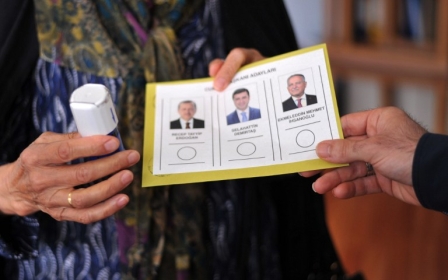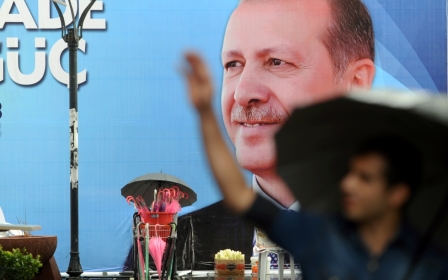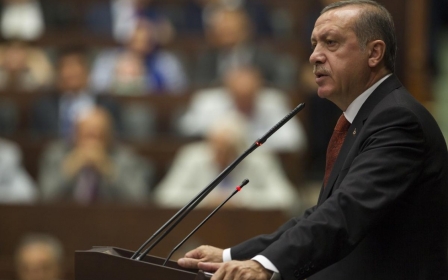Erdogan wrapped up in modern Turkey’s destiny

Turkey’s recent history and the change it is undergoing today cannot be adequately understood without a comprehensive understanding of who exactly incoming president Recep Tayyip Erdogan is and what he means for Turkey.
To understand “what” Erdogan is, it is necessary to understand “who” he is. This observation rings particularly true for outsiders trying to analyze the country.
The decline and dissolution of the Ottoman Empire, the retreat from North Africa, the Balkans and the Caucasia, the masses finding refuge in Anatolia once again, the wars, the devastating defeats, the Republic experience, Turkish modernisation and the secularist tutelage regime. These are only some of the topics of which one needs to have at least some idea in order to understand Turkey without falling into a trap of anachronistic analysis.
Any analysis that does not consider this centuries-old historical background and continuity will be seriously flawed. Turkish identity today rests on the social imaginings that began with the Seljuks, continued with the Ottomans and were later shaped by the particularities of Anatolian culture for centuries. Despite all the damage done to it by the secularist republic in the name of Westernization, the Anatolian-Islamist spirit is still here.
In the 1990s, or even the beginning of the 2000s, no one would take seriously the claim that this spirit would be still be tangible in Turkey in 2014. However, they weren’t to know that this country would experience a silent revolution.
Almost all Turks, whether they supported or opposed it, admit that was has happened is nothing short of a revolution. Those who opposed this silent revolution blame Erdogan for undoing the Republican reforms put in place in the 1920s and 30s. Those who support it, praise Erdogan for giving back everything they had thought they lost during the Kemalist era. Thus there are two camps that do not agree on much. As long as one pole focuses on losses and the other on gains, this situation will not change any time soon.
More than half of the population actively votes for Erdogan. This is a significant ratio for a country that is polarised and divided into many different factions. This is not all. A moderate estimate would state that 70% of Turkey’s population is conservative. This number rises to the mid-seventies when opposition to radical secularism is taken into account.
Given these demographics, it is perhaps unsurprising that support for Erdogan - even support that does not translate into actual votes - hovers around 60%. Not unlike the 58% who voted for Erdogan in the 2010 constitutional referendum which turned into an existential crisis for the Kemalists. Erdogan, in every sense of the word, represents a father figure for that potential 60%.
He is a genuine leader. You can find many Erdogan figures in the corner coffee house. This rises to hundreds of thousands in public events, demonstrations, even millions in moments of crisis.
Erdogan is blamed for inciting nationalism. However, Erdogan is the first Turkish leader who has not only touched on the most sensitive nationalist issue in Turkey - the Kurdish question - He has also initiated a resolution process and after many years guns are silenced.
Erdogan is accused of intolerance. However, he is the first leader to have resolved problems minorities had been experiencing and to have apologised for the Armenian deaths in 1915. This list goes on.
A different figure of Erdogan emerges depending on your perspective, which, of course, is perfectly understandable. Turkey is a country that is going through pains of normalisation. The half-century long journey of the periphery towards the center was completed (to a great extent), in 2010. This journey, which had began after the establishment of the Kemalist Republic has been arduous. The attempts to create roadblocks in the periphery’s path to the center only succeeded creating huge national crises.
The coup of 1960 was the first attempt at a roadblock. The democratically elected prime minister of the country was hanged, the constitution was changed and the primitive Kemalist military-judiciary tutelage regime was set. This coup succeeded in alienating the large masses to the right of the centre (70-75%) from politics and slowing down their journey to the center.
The voter turnout rates decreased. The elections in which the left had achieved their highest percentage of votes and took power were the elections in which the rate of participation was less than 50%, even low 40s. For example, the rate of participation in March 30, 2014 elections was 90%. Similarly, the Welfare Party, which came to power through elections, was ousted by a Kemalist coup in 1997.
The military tutelage regime tried with all its might to keep the AK Party that came to power in 2002 under its control. There were coup plans in 2004 and 2005. The military intervened directly in 2007 in their attempt to prevent the presidential elections from taking place.
During all this, Erdogan behaved differently than all other civilian leaders before him. He resisted the military tutelage regime. The tutelage was forced to take a step back. During all this, millions, not only his constituency, but even the Nationalist Movement Party constituency as well as the Kurds, supported Erdogan. At the end, the half a century long “journey of the periphery” became the “power of the periphery” embodied in the figure of Erdogan.
In this perspective, Erdogan signifies the normalization of society. This process of normalisation, like all periods of transition or transformation, carries certain tensions with it. These tensions serve as great material for an opposition whose hopes of coming to power have been rendered a demographic impossibility.
In other words, the opposition prefers to exploit these tensions instead of managing them. The opposition parties, who can only survive in a couple of the seven electoral districts in Turkey, are trapped into anti-political positions of their own making. They focus all of their energies on attacking Erdogan instead of actual politics. This strategy only serves to strengthen the masses’ belief in someone who they perceive as their first real leader in a hundred years.
When an unprecedented degree of economic success and stability is added to this equation, it leaves no realistic ground for the opposition.
In the presidential elections, the combined votes for two main opposition party lagged 14 points behind Erdogan. This is a significant difference. If we were to consider the votes of the Nationalist Movement Party separately, it could be said that the secularist-Kemalist opposition received only one third of the votes Erdogan did.
This means that they received 25% or less of the votes in general. In other words, the periphery’s journey towards the center was finalized with the conquest of the last fort of Kemalism - the presidential office. This situation appears to be permanent for some years to come. Not only is there no ground for a sharp sociological turn around for this to change, but there is no valid reason for the periphery to retreat from the center they have finally reached any time soon.
- Taha Ozhan is the president of SETA Foundation at Ankara. He is an academic, writer and columnist for Star Daily and Daily Sabah. He appears on a weekly political debate show on national TV. He frequently comments and writes for international media. His latest book, Normalization Pains (2014), was about the Kurdish issue.
The views expressed in this article belong to the author and do not necessarily reflect the editorial policy of Middle East Eye.
Photo credit: Erdogan receives greetings after his post-election ''balcony speech'' at AK Party headquarters (AA)
New MEE newsletter: Jerusalem Dispatch
Sign up to get the latest insights and analysis on Israel-Palestine, alongside Turkey Unpacked and other MEE newsletters
Middle East Eye delivers independent and unrivalled coverage and analysis of the Middle East, North Africa and beyond. To learn more about republishing this content and the associated fees, please fill out this form. More about MEE can be found here.





